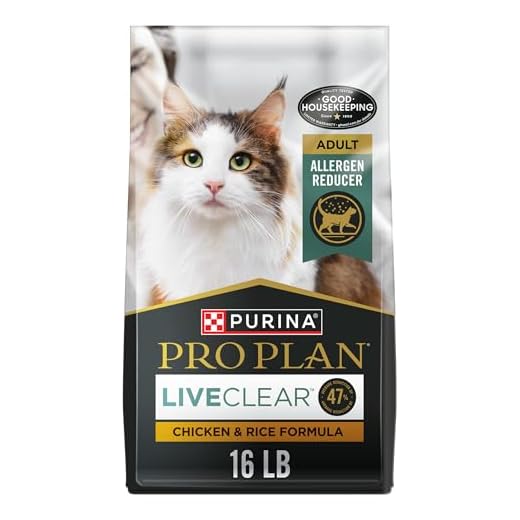



Yes, the meat from a roasted bird can be a delightful treat for me, but it’s crucial to skip the outer layer. The skin is often greasy and may contain seasonings that aren’t suitable for my tummy. Focusing on the plain, cooked flesh ensures a tasty and safe snack.
When munching on this succulent meat, it’s best to remove any bones as well. Small pieces can pose a choking hazard or cause internal harm. Always make sure to serve it in manageable, bite-sized portions to avoid any mishaps.
In moderation, this protein source can be a delicious addition to my regular meals. It’s packed with nutrients that benefit my health, but variety is key. Balancing it with other foods ensures I get all the vitamins and minerals I need to thrive.
Safe Choices for Mealtime
I can have plain, cooked poultry as a delightful treat. It’s a great source of protein and can be very beneficial for my diet. Just make sure it’s free from any additives or spices, which can be harmful to me.
Preparation Tips
- Remove any bones to prevent choking.
- Ensure it’s served at room temperature for my comfort.
- Cut into small, manageable pieces for easy munching.
Watch for Reactions
After trying a new food, monitor me for any unusual reactions like upset stomach or changes in behavior. If I show signs of discomfort, it’s best to avoid that treat in the future.
Nutritional Benefits of Rotisserie Chicken for Feline Friends
As a Scottish Fold with a refined palate, I’ve discovered that this cooked poultry offers plenty of nutrients beneficial for my fellow felines. The protein content is impressive, providing essential amino acids necessary for muscle maintenance and overall health.
Rich in taurine, a critical amino acid, this meat supports heart function and eye health. It’s also packed with vitamins like B6 and B12, which help with energy metabolism and neurological function. The phosphorus found in this protein source is important for healthy bones and teeth, contributing to strong skeletal structure.
Additionally, the low fat content, especially when the outer layer is removed, makes it a suitable option for those watching their weight. Hydration is another perk; cooked meat retains moisture, aiding in fluid intake for hydration. This can be particularly beneficial for those who may not drink enough water.
Always prioritize fresh, unseasoned options to maximize health benefits. It’s a tasty treat that can be incorporated into a well-balanced diet, ensuring a happy and healthy life for all of us. Remember, moderation is key!
Risks of Feeding Cats Rotisserie Chicken Without Skin
Feeding pieces of cooked poultry can pose certain risks, even if the skin is removed. The primary concern is the potential for bones, which can splinter and cause choking or internal injury. Always ensure that any poultry served is free from bones, as even small fragments can lead to serious health issues.
Another consideration is the seasoning often found on store-bought birds. Spices like garlic and onion are toxic to felines. Even in small amounts, they can lead to gastrointestinal upset or more severe health problems. Always check ingredients carefully before sharing any human food.
Digestive Issues
Introducing new food items abruptly can upset the digestive system. If you decide to share some poultry, do so gradually. Monitor for signs of distress, such as vomiting or diarrhea. A slow introduction allows for adjustments to the diet without causing harm.
Allergies and Sensitivities
Some furry friends may have allergies or sensitivities to poultry. Symptoms can include itching, swelling, or gastrointestinal problems. If you notice any adverse reactions, discontinue feeding immediately and consult a veterinarian for guidance.
How to Prepare Rotisserie Chicken for Your Cat
First, remove all bones from the meat. These can pose a choking hazard or cause internal injuries. Shred the flesh into small, manageable pieces to ensure easy consumption.
Next, eliminate any seasoning or additives. The flavors used in cooking can be harmful, so focus on plain, unseasoned meat. Rinsing the shredded meat with water can help remove any residual spices.
Store the prepared portions in an airtight container in the refrigerator. This keeps the chicken fresh for up to three days. For longer storage, freeze the portions in small bags, making it easy to serve a quick meal later.
When serving, allow the meat to reach room temperature to avoid shocking the digestive system. You can mix it with regular food to introduce it gradually, ensuring it’s a welcomed addition to the diet.
| Preparation Step | Details |
|---|---|
| Remove Bones | Ensure all bones are taken out to prevent choking hazards. |
| Shred Meat | Cut into small pieces for safe consumption. |
| Eliminate Seasoning | Rinse to remove any harmful spices or additives. |
| Storage | Use airtight containers for refrigeration or freeze in small bags. |
| Serving Temperature | Serve at room temperature to aid digestion. |
Signs of Allergies or Sensitivities in Felines
Watch for signs like excessive scratching, biting at the skin, or redness in sensitive areas. If your companion develops a rash or experiences hair loss, these could be indicators of an allergy. Observe for gastrointestinal issues such as vomiting or diarrhea, which often accompany dietary sensitivities.
Behavioral Changes
Behavioral shifts can also signal discomfort. If your furry friend becomes more withdrawn, irritable, or shows reluctance to engage in play, it might point to an underlying issue. Keeping a close eye on behavior can provide crucial insights into their well-being.
Monitoring Reactions
After introducing any new food, including cooked poultry, monitor reactions over the next few days. Document any changes in behavior, appetite, or physical condition. If symptoms persist, consult a veterinarian for tailored advice.
For more information on various topics, visit can I use vinegar and water in my pressure washer.
Recommended Serving Sizes for Your Feline Friend
For a healthy diet, offering 1 to 2 ounces of boneless meat per day is advisable for a typical feline. This ensures a balanced intake without overindulgence.
- Small cats (up to 10 lbs): 1 ounce daily.
- Medium cats (10-15 lbs): 1.5 ounces daily.
- Larger cats (over 15 lbs): 2 ounces daily.
Always introduce new protein sources gradually, mixing small amounts with regular food. Monitor reactions closely to ensure no adverse effects occur.
Hydration is crucial, so ensure access to fresh water at all times. If your furry companion has specific health conditions, like kidney issues, consult a vet for tailored dietary adjustments. For additional insights, check out this link on foods for cats with kidney disease.
Remember, moderation is key. It’s best to use meat as an occasional treat rather than a primary diet component.
Alternatives to Rotisserie Chicken for Feline Diets
Grilled turkey breast serves as an excellent substitute, offering a lean protein source without added fats or seasonings. Remove any bones and ensure it’s thoroughly cooked before serving.
Cooked fish, such as salmon or tuna, provides omega-3 fatty acids beneficial for a shiny coat and overall health. Opt for plain, unseasoned varieties and avoid canned products with added salt or preservatives.
Eggs as a Protein Source
Scrambled or hard-boiled eggs can be a nutritious option. They contain high-quality protein and essential amino acids. Make sure to cook them thoroughly and serve in moderation, as too many can upset delicate stomachs.
Commercially Available Cat Food
High-quality wet or dry cat food formulated with essential nutrients is always a reliable choice. Look for products that list real meat as the first ingredient and avoid fillers. This ensures a balanced diet tailored to feline needs.









